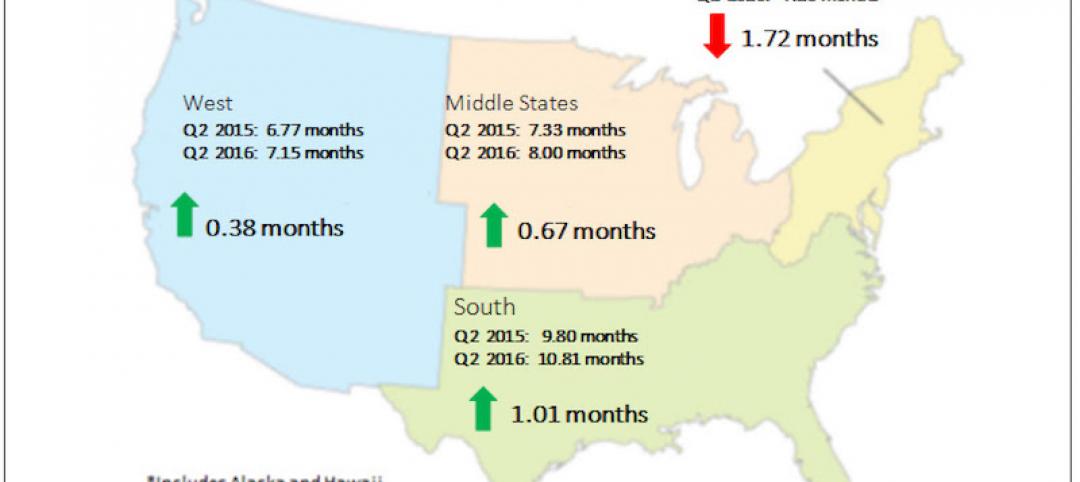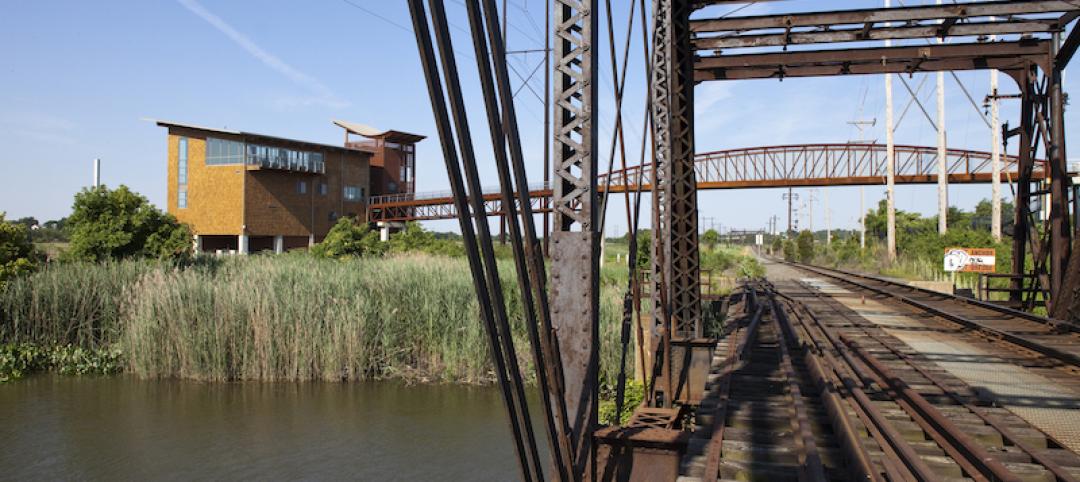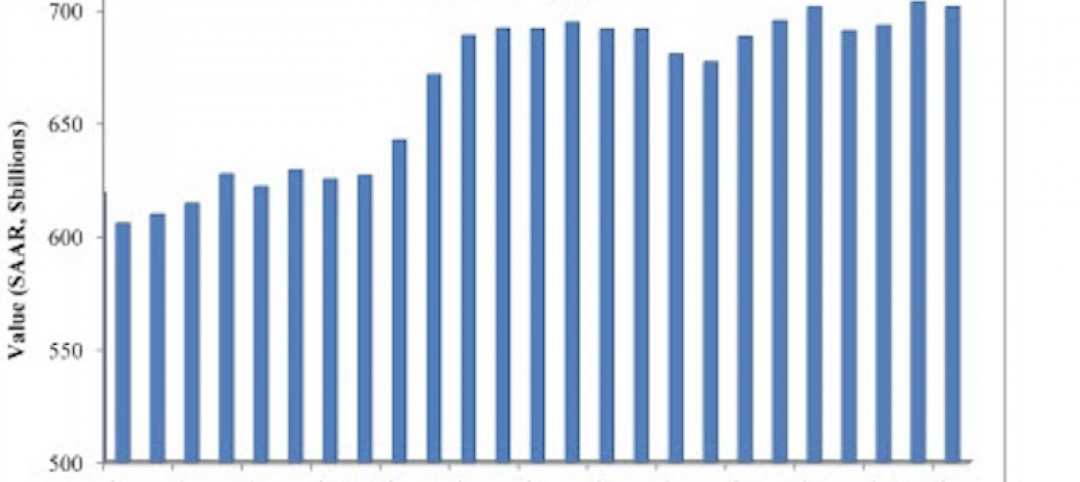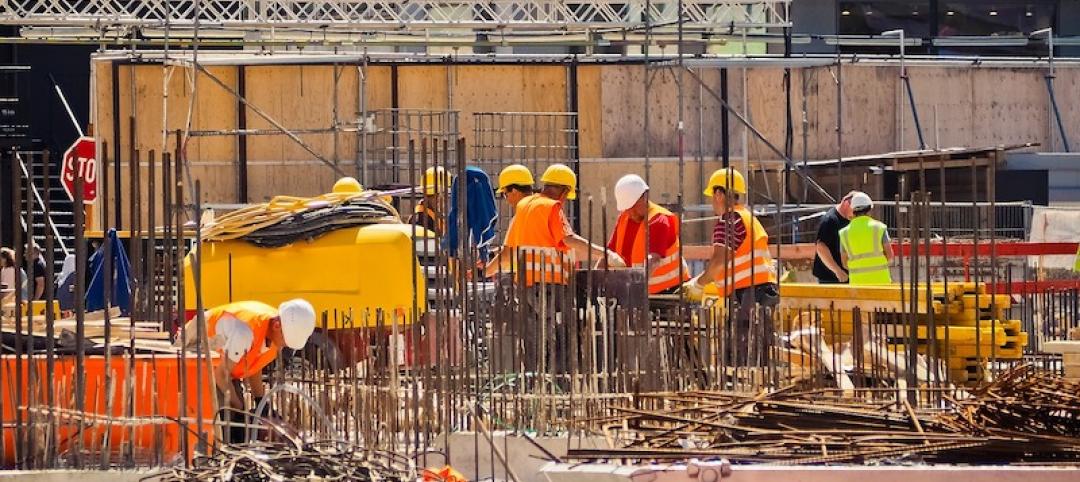Forty-four states and the District of Columbia added construction jobs between October 2017 and October 2018, while 36 states and D.C. added construction jobs between September and October, according to an analysis recently released by the Associated General Contractors of America of Labor Department data. Association officials said that firms in most parts of the country are adding staff to keep pace with growing demand for construction, but cautioned that rising labor and materials costs could undermine future demand.
"Construction activity continues to expand at a steady clip, with employment growing by more than 10% during the past year in five states and by more than 5% in another 18 states," said chief economist Ken Simonson. "As contractors pay more for labor and most of the materials they use to build, construction costs will climb, potentially dampening future demand for their services."
Texas added the most construction jobs during the past year (49,900 jobs, 6.9%). Other states adding a large number of new construction jobs for the past 12 months include Florida (43,400 jobs, 8.5%), California (30,000 jobs, 3.6%), Georgia (21,600 jobs, 11.6%), Arizona (18,000 jobs, 12.1%) and New York (15,600 jobs, 4.1%). Arizona added the highest percentage of new construction jobs during the past year, followed by Georgia, Nevada (11.4%, 9,500 jobs), Oregon (10.5%, 10,400 jobs), New Hampshire (10.3%, 2,800 jobs) and Florida. Construction employment reached a record high in five states: Massachusetts, New York, Oregon, Texas and Washington.
Six states shed construction jobs between October 2017 and 2018. The largest declines and steepest percentage losses occurred in New Jersey (-3,800 jobs, -2.5%), followed by South Carolina (-1,700 jobs, -1.7%), Oklahoma (-500 jobs, -0.6%), Hawaii (-300 jobs, -0.8%) and Mississippi (-300 jobs, -0.7%).
Among the 36 states with one-month job gains between September and October, Florida (3,000 jobs, 0.5%) and California (3,000 jobs, 0.4%) had the largest gains, followed by Arizona (2,500 jobs, 1.5%), Georgia (2,500 jobs, 1.2%), Washington (2,500 jobs, 1.2%) and New York (2,500 jobs, 0.6%). Iowa added the highest percentage of construction jobs for the month (2.0%, 1,600 jobs), followed by Wyoming (1.9%, 400 jobs) and Rhode Island (1.6%, 300 jobs).
From September to October, construction employment declined in 12 states and was unchanged in Connecticut and Maine. Louisiana lost the most construction jobs (-1,900 jobs, -1.3%), followed by Oklahoma (-900 jobs, -1.2%) and Michigan (-900 jobs, -0.5%). Mississippi lost the highest percentage of construction jobs in October (-1.6%, -700 jobs), followed by Montana (-1.4%, -400 jobs), Louisiana and Oklahoma.
Association officials said widespread construction employment gains are a sign of strong demand for construction services in most parts of the country. But they cautioned that without new investments in career and technical education, immigration reform and swift resolution of trade disputes, labor and materials costs will continue to climb.
"Firms in many parts of the country are hiring as fast as they can find qualified workers to bring onboard just to keep pace with demand," said Stephen E. Sandherr, the association's chief executive officer. "But at some point, the increasing costs of labor and construction materials are going to drive construction prices to the point where many customers reschedule or rethink their projects."
View the state employment data by rank, state and peaks. View the state employment map.
Related Stories
Market Data | Sep 22, 2016
Architecture Billings Index slips, overall outlook remains positive
Business conditions are slumping in the Northeast.
Market Data | Sep 20, 2016
Backlog skyrockets for largest firms during second quarter, but falls to 8.5 months overall
While a handful of commercial construction segments continue to be associated with expanding volumes, for the most part, the average contractor is no longer getting busier, says ABC Chief Economist Anirban Basu.
Designers | Sep 13, 2016
5 trends propelling a new era of food halls
Food halls have not only become an economical solution for restauranteurs and chefs experiencing skyrocketing retail prices and rents in large cities, but they also tap into our increased interest in gourmet locally sourced food, writes Gensler's Toshi Kasai.
Building Team | Sep 6, 2016
Letting your resource take center stage: A guide to thoughtful site selection for interpretive centers
Thoughtful site selection is never about one factor, but rather a confluence of several components that ultimately present trade-offs for the owner.
Market Data | Sep 2, 2016
Nonresidential spending inches lower in July while June data is upwardly revised to eight-year record
Nonresidential construction spending has been suppressed over the last year or so with the primary factor being the lack of momentum in public spending.
Industry Research | Sep 1, 2016
CannonDesign releases infographic to better help universities obtain more R&D funding
CannonDesign releases infographic to better help universities obtain more R&D funding.
Industry Research | Aug 25, 2016
Building bonds: The role of 'trusted advisor' is earned not acquired
A trusted advisor acts as a guiding partner over the full course of a professional relationship.
Multifamily Housing | Aug 17, 2016
A new research platform launches for a data-deprived multifamily sector
The list of leading developers, owners, and property managers that are funding the NMHC Research Foundation speaks to the information gap it hopes to fill.
Hotel Facilities | Aug 17, 2016
Hotel construction continues to flourish in major cities
But concerns about overbuilding persist.
Market Data | Aug 16, 2016
Leading economists predict construction industry growth through 2017
The Chief Economists for ABC, AIA, and NAHB all see the construction industry continuing to expand over the next year and a half.

















